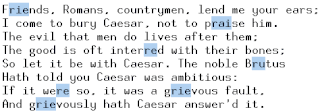Related Research Articles

PostgreSQL also known as Postgres, is a free and open-source relational database management system (RDBMS) emphasizing extensibility and SQL compliance. PostgreSQL features transactions with atomicity, consistency, isolation, durability (ACID) properties, automatically updatable views, materialized views, triggers, foreign keys, and stored procedures. It is supported on all major operating systems, including Windows, Linux, macOS, FreeBSD, and OpenBSD, and handles a range of workloads from single machines to data warehouses, data lakes, or web services with many concurrent users.

A regular expression, sometimes referred to as rational expression, is a sequence of characters that specifies a match pattern in text. Usually such patterns are used by string-searching algorithms for "find" or "find and replace" operations on strings, or for input validation. Regular expression techniques are developed in theoretical computer science and formal language theory.
In computer science, string-searching algorithms, sometimes called string-matching algorithms, are an important class of string algorithms that try to find a place where one or several strings are found within a larger string or text.
Structured Query Language (SQL) is a domain-specific language used to manage data, especially in a relational database management system (RDBMS). It is particularly useful in handling structured data, i.e., data incorporating relations among entities and variables.
grep is a command-line utility for searching plaintext datasets for lines that match a regular expression. Its name comes from the ed command g/re/p, which has the same effect. grep was originally developed for the Unix operating system, but later became available for all Unix-like systems and some others such as OS-9.
agrep is an open-source approximate string matching program, developed by Udi Manber and Sun Wu between 1988 and 1991, for use with the Unix operating system. It was later ported to OS/2, DOS, and Windows.
Soundex is a phonetic algorithm for indexing names by sound, as pronounced in English. The goal is for homophones to be encoded to the same representation so that they can be matched despite minor differences in spelling. The algorithm mainly encodes consonants; a vowel will not be encoded unless it is the first letter. Soundex is the most widely known of all phonetic algorithms Improvements to Soundex are the basis for many modern phonetic algorithms.
In text retrieval, full-text search refers to techniques for searching a single computer-stored document or a collection in a full-text database. Full-text search is distinguished from searches based on metadata or on parts of the original texts represented in databases.
The following tables compare general and technical information for a number of relational database management systems. Please see the individual products' articles for further information. Unless otherwise specified in footnotes, comparisons are based on the stable versions without any add-ons, extensions or external programs.
A database index is a data structure that improves the speed of data retrieval operations on a database table at the cost of additional writes and storage space to maintain the index data structure. Indexes are used to quickly locate data without having to search every row in a database table every time said table is accessed. Indexes can be created using one or more columns of a database table, providing the basis for both rapid random lookups and efficient access of ordered records.

In SQL, null or NULL is a special marker used to indicate that a data value does not exist in the database. Introduced by the creator of the relational database model, E. F. Codd, SQL null serves to fulfill the requirement that all true relational database management systems (RDBMS) support a representation of "missing information and inapplicable information". Codd also introduced the use of the lowercase Greek omega (ω) symbol to represent null in database theory. In SQL, NULL is a reserved word used to identify this marker.

In computer science, approximate string matching is the technique of finding strings that match a pattern approximately. The problem of approximate string matching is typically divided into two sub-problems: finding approximate substring matches inside a given string and finding dictionary strings that match the pattern approximately.
A WHERE clause in SQL specifies that a SQL Data Manipulation Language (DML) statement should only affect rows that meet specified criteria. The criteria are expressed in the form of predicates. WHERE clauses are not mandatory clauses of SQL DML statements, but can be used to limit the number of rows affected by a SQL DML statement or returned by a query. In brief SQL WHERE clause is used to extract only those results from a SQL statement, such as: SELECT, INSERT, UPDATE, or DELETE statement.
A spatial database is a general-purpose database that has been enhanced to include spatial data that represents objects defined in a geometric space, along with tools for querying and analyzing such data.
In relational databases, a condition in a query is said to be sargable if the DBMS engine can take advantage of an index to speed up the execution of the query. The term is derived from a contraction of Search ARGument ABLE. It was first used by IBM researchers as a contraction of Search ARGument, and has come to mean simply "can be looked up by an index."1
Google Code Search was a free beta product from Google which debuted in Google Labs on October 5, 2006, allowing web users to search for open-source code on the Internet. Features included the ability to search using operators, namely lang:, package:, license:, and file:.
Language Integrated Query is a Microsoft .NET Framework component that adds native data querying capabilities to .NET languages, originally released as a major part of .NET Framework 3.5 in 2007.
Elasticsearch is a search engine based on Apache Lucene. It provides a distributed, multitenant-capable full-text search engine with an HTTP web interface and schema-free JSON documents. Official clients are available in Java, .NET (C#), PHP, Python, Ruby and many other languages. According to the DB-Engines ranking, Elasticsearch is the most popular enterprise search engine.
In computer science, the Commentz-Walter algorithm is a string searching algorithm invented by Beate Commentz-Walter. Like the Aho–Corasick string matching algorithm, it can search for multiple patterns at once. It combines ideas from Aho–Corasick with the fast matching of the Boyer–Moore string-search algorithm. For a text of length n and maximum pattern length of m, its worst-case running time is O(mn), though the average case is often much better.
In computer science, an algorithm for matching wildcards is useful in comparing text strings that may contain wildcard syntax. Common uses of these algorithms include command-line interfaces, e.g. the Bourne shell or Microsoft Windows command-line or text editor or file manager, as well as the interfaces for some search engines and databases. Wildcard matching is a subset of the problem of matching regular expressions and string matching in general.
References
- ↑ Hardarson, Omar (1997). "Interactive coding of economic activity using trigram search in BLAISE III" (PDF). International Blaise User Group. Note: This article discusses trigram search as a way of efficiently encoding certain kinds of economic data, and finds that this technique is particularly useful when the users of the system have little context for the structure of the data.
- 1 2 3 Cox, Russ (January 2012). "Regular Expression Matching with a Trigram Index or How Google Code Search Worked".
- ↑ Adams, Elizabeth; Meltzer, Arnold (1 March 1993). "Trigrams as index element in full text retrieval: Observations and experimental results". Proceedings of the 1993 ACM conference on Computer science - CSC '93. pp. 433–439. doi:10.1145/170791.170891. ISBN 0897915585. S2CID 16701550.
- 1 2 3 "F.33. pg_trgm". PostgreSQL Documentation. 2022-05-12. Retrieved 2022-05-28.
- 1 2 3 "Fast Search Using PostgreSQL Trigram Text Indexes". GitLab. 2016-03-18. Retrieved 2022-05-28.
- ↑ Zobel, Justin; Moffat, Alistair; Sacks-Davis, Ron (1993). "Searching Large Lexicons for Partially Specified Terms using Compressed Inverted Files" (PDF). Conference on Very Large Databases (VLDB). Note: This research paper does not use the term "trigram search" but does seem to be the first instance in the literature of using n-grams as indices, and is cited in the Russ Cox article as the first instance of the structure of a reverse index based on trigrams. The paper also cited successful performance results from using this style of search.
- ↑ "Big Grep". resources.sei.cmu.edu. 11 August 2017. Retrieved 2022-06-12. Also called BigGrep. Uses n-grams (not always 3),
- ↑ "N-gram tokenizer | Elasticsearch Guide [8.2] | Elastic". www.elastic.co. Retrieved 2022-05-28.